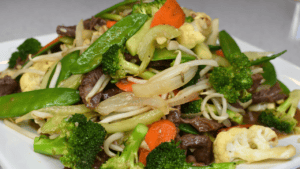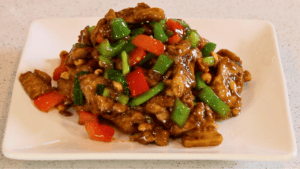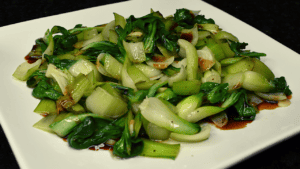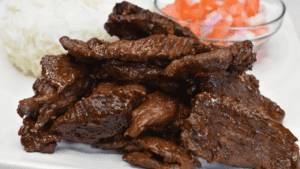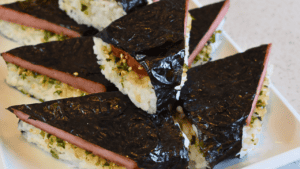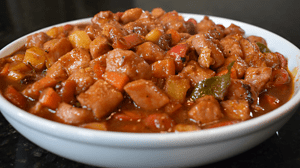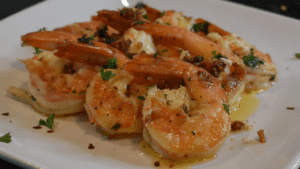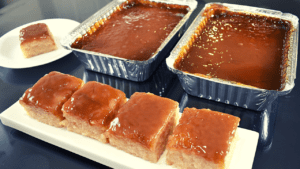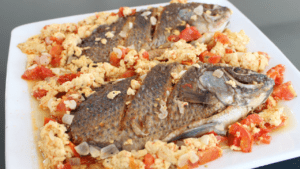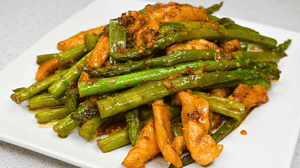Sinigang na Bangus Belly
Sinigang na bangus belly is a traditional Filipino soup dish made with milkfish belly, vegetables, and tamarind broth. The fish belly is typically the most prized part of the milkfish due to its tender, fatty meat. The dish gets its tangy flavor from tamarind, which is used to make the sour broth.
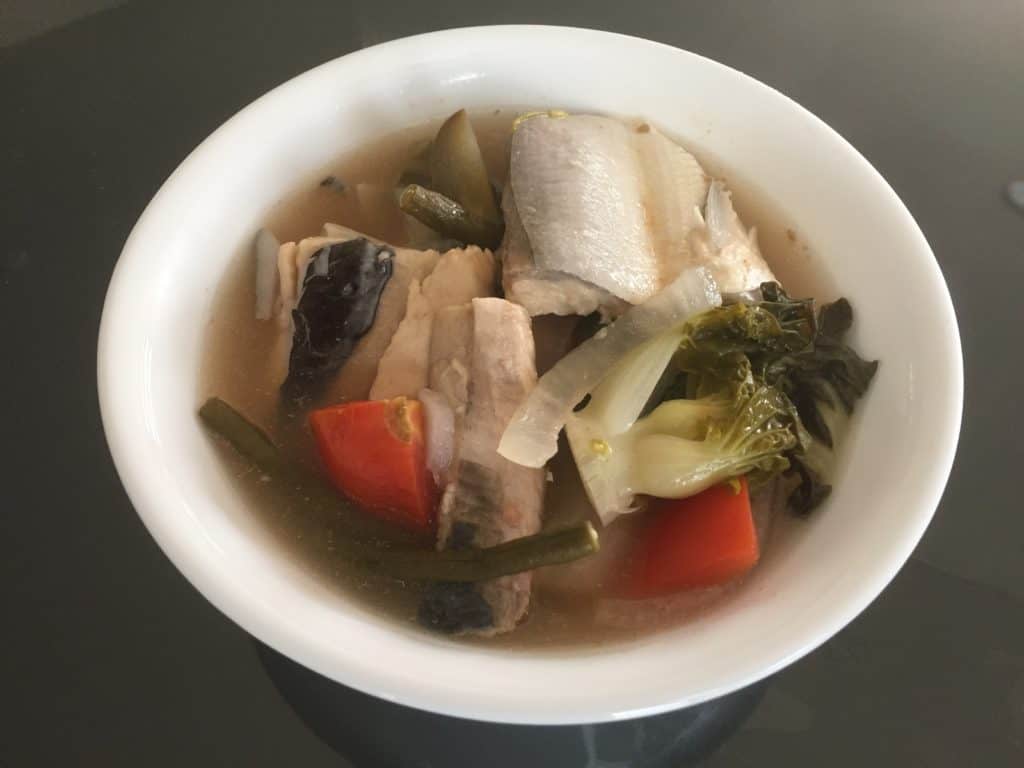
The Ultimate Guide to Sinigang na Bangus Belly: A Filipino Delight
Introduction to Sinigang na Bangus Belly
Step into any Filipino household, and the aroma of sour tamarind soup wafting from the kitchen is a comforting signal that a pot of sinigang is brewing. Sinigang, a beloved Filipino staple, is a tantalizingly sour soup enjoyed by many. One of its most celebrated variations is sinigang na bangus belly, a quintessential combination of the rich, oily texture of milkfish belly and the tangy broth that defines this dish’s character.
Sinigang’s popularity not only lies in its satisfying taste but also because it embodies the heart of Filipino cuisine – a fusion of flavors and ingredients that reflect the country’s diverse heritage and local produce. Food enthusiasts, from Filipino cuisine aficionados to health-conscious consumers, are bound to appreciate the meticulous preparation and rich culinary story behind this dish.
In this comprehensive guide, we’ll uncover the history, preparation, nutritional profile, and even the best beverage pairings for your sinigang na bangus belly. We’ll also explore the myriad regional twists that make each recipe a unique culinary experience. Are you ready to master this Filipino classic? Let’s begin!
History of Sinigang
Origins and Cultural Significance
Sinigang traces its roots back to the pre-colonial era of the Philippines, where indigenous souring agents such as tamarind, calamansi, and santol fruit were used to flavor dishes. The colonial period further enriched this cuisine, as it introduced ingredients like tomatoes and miso, giving rise to the sinigang as we know it today.
The dish not only evolved through time but also varied across the islands. In Luzon, fish sinigang is popular for its rich, sour broth, primarily achieved using tamarind sap or calamansi. In contrast, Visayas and Mindanao’s sinigang versions often incorporate spare ribs or shrimp, offering a wider selection of proteins for this sour soup.
Sinigang embodies the Filipino spirit – adaptable and inclusive – with recipes often passed down through generations, preserving its cultural relevance. Every pot of sinigang not only offers a taste of the Philippines but a slice of history and tradition as well.
Ingredients and Preparation of Sinigang na Bangus Belly
Sinigang na bangus belly is relatively simple to prepare, with the star ingredient being the bangus, or milkfish, known for its delicate flavor and tender meat. Here’s what you’ll need for a delightful pot of sinigang for about 6 servings:
Ingredients:
- 2 lbs bangus belly, boneless
- ½ lb long beans, chopped into 2-inch segments
- 3 medium eggplants, sliced
- 1 lb baby bok choy
- 2 medium tomatoes, quartered
- 1 medium onion, sliced
- 1 small piece of ginger, peeled and sliced
- 1 pouch sinigang mix (1.76 oz or 50 g)
- 8 cups of water
Preparation:
- Prep the Veggies: Thoroughly clean and chop your long beans, eggplants, and bok choy. Set them aside until needed.
- Boil the Water: In a large cooking pot, begin with boiling the 8 cups of water. Once boiling, allow it to simmer for about 5 minutes.
- Add the Aromatics and Tomatoes: Combine your sliced tomatoes, onion, and ginger into the pot. Continue to simmer the mixture for roughly 10 minutes to infuse the broth with their flavors.
- Introduce the Sinigang Mix: Pour the contents of the sinigang mix into the pot. This mix not only adds sourness but also a depth of flavor that’s characteristic of sinigang. Stir gently to ensure it’s well-dissolved.
- Incorporate the Main Ingredients: Carefully add your chopped vegetables to the pot, allowing them to cook in the simmering broth for another 15 minutes until they are slightly tender.
- Finally, the Milkfish Belly: Nestle the bangus belly into the pot. Cook for an additional 5 to 7 minutes until the fish is fully cooked.
- The Sinigang is Served: Once the fish is done, turn off the heat. Your sinigang na bangus belly is ready to serve! Make sure to ladle a generous portion of the delicious broth, fish, and vegetables into each bowl.
Nutritional Benefits of Sinigang na Bangus Belly
Sinigang na bangus belly isn’t just a feast for the taste buds; it’s also a nutritious meal. The combination of fish, mixed vegetables, and the sour broth calms the gastric digestive system and provides important vitamins and minerals.
Health Benefits Include:
- The high Omega-3 fatty acids found in milkfish can promote heart health and have anti-inflammatory properties.
- The assortment of vegetables such as bok choy, long beans, and eggplants are rich sources of dietary fiber, essential for good digestion.
- The broth, made sour by the tamarind, is high in Vitamin C and other antioxidants that enhance the immune system.
Together, these components deliver a balanced, healthy meal that contributes to overall well-being.
Variations and Regional Twists
Sinigang na bangus belly is just one version of this soup, and variety is the spice of life – and of sinigang! Across the Philippines, different provinces and communities have their unique spins on this classic dish, often influenced by what’s locally available or by regional tastes.
Regional Variations to Explore:
- Sinigang sa Miso: This variation combines the sourness of sampalok with the richness of miso, offering a thicker and more savory broth.
- Sinigang na Hipon: Instead of fish, shrimp is the star of this version. It provides a unique sweetness to the sour base that’s hard to resist.
- Sinampalukang Manok: If you’re looking for a non-seafood option, this tamarind soup with chicken will not disappoint. It’s a common alternative for those who prefer poultry.
- Sinigang na Baboy: Pork belly or ribs are cooked in a tangy tamarind broth, creating a hearty and flavorsome dish loved by many.
Exploring these variations can open up a world of flavors within the sinigang spectrum and showcase the creativity of Filipino cuisine.
Pairing Suggestions
To maximize the experience of sinigang na bangus belly, pairing it with the right accompaniments is key. The goal is to have compatible flavors and a balanced meal. Considering the sourness of the soup, try these suggestions to elevate your dining affair:
Ideal Pairings Include:
- Beverages: A refreshing beverage like an ice-cold soft drink or water with a slice of lemon complements the sourness. For those who prefer an adult twist, a light lager beer is also a good match.
- Side Dishes: Steamed white rice is the go-to side for sinigang, but fried fish, grilled meats, or sautéed shrimp paste can also add an extra layer of taste to your table.
By tailoring your pairings to these recommendations, you’ll ensure a perfectly balanced and delightful dining experience.
Tips for Cooking and Serving
Enhancing Flavor and Presentation
To truly master the art of making sinigang na bangus belly, consider these helpful tips:
Cooking Tips:
- Ensure that your pot provides enough room for the ingredients. Overcrowding can impact the cooking time and the dish’s overall texture.
- When cooking the fish, avoid stirring to prevent it from breaking. Instead, gently move the pot in a circular motion to blend flavors.
- Taste the soup during the cooking process to adjust the sourness to your liking. Add more tamarind if you prefer a more pronounced tartness.
Serving Tips:
- Garnish your sinigang with fresh cilantro or scallions for a vibrant and appetizing appearance.
- Serve the soup in a clay pot or any traditional Filipino-serving ware to add authenticity.
- Provide freshly cut chili on the side for diners who like their sinigang with an extra kick.
Final Thoughts
Through this Ultimate Guide to Sinigang na Bangus Belly, you’ve not only learned how to prepare a delectable Filipino dish but have also dived into the rich culinary heritage that shapes it. The versatility of sinigang is a testament to the creativity and resourcefulness of Filipino cooks, who continue to innovate and inspire with their recipes.
As you practice and perfect your sinigang, don’t forget to infuse it with your personal touch. Whether you decide to up the spice level, experiment with different seafood, or simply enjoy the dish in the company of loved ones, every bowl of sinigang tells a unique story – one that evolves with every simmer, every serve, and every smile around the dining table.
Share your sinigang story with us. How do you like your sinigang na bangus belly? What memories does it bring back, and what does it mean to you? Together, we’ll celebrate the flavors and warmth that make Filipino cuisine so special.
Sinigang Na Bangus Belly Frequently Asked Questions
What is sinigang na bangus made of?
Sinigang na bangus is a traditional Filipino dish made with milkfish, also known as bangus, and a sour broth typically made from tamarind or other acidic fruits like guava or calamansi. The fish is cooked in the flavorful broth along with vegetables such as okra, daikon radish, eggplant, and kangkong (water spinach). It is commonly eaten with rice and can be flavored with fish sauce and chili peppers.
How do you remove bitterness from sinigang?
To remove bitterness from sinigang, some people recommend soaking the sliced vegetables in cold water for 10-15 minutes before adding them to the boiling broth. Another method is to add a small amount of sugar to balance out the acidity of the dish.
How much protein is in sinigang na bangus?
The amount of protein in sinigang na bangus can vary depending on the size of the fish used and how it was prepared. On average, one serving (100g) of milkfish has about 17g of protein.
How many calories are in sinigang fish?
The number of calories in sinigang will also vary depending on factors such as portion size and ingredients used. However, one serving (100g) of boiled milkfish without any added ingredients contains around 145 calories.
Is sinigang healthy or unhealthy?
Overall, sinigang na bangus can be considered healthy because it includes nutritious ingredients such as vegetables and lean protein from the fish. It can also be low in fat if you use lean cuts or trim off excess fat before cooking.
How many calories are in a bangus belly?
A single serving (100g) of bangus belly contains approximately 186 calories. Bangus belly is high in fat compared to other parts of the fish but it does contain essential fatty acids that are beneficial for heart health.
Is milkfish belly healthy?
Milkfish belly itself may not necessarily be healthier than other parts such as fillets or steaks. However, all parts contain similar levels of nutrients so incorporating variety into your diet by consuming different parts would provide more balanced nutrition overall
Is bangus good for losing weight?
Bangus itself is not specifically recommended for weight loss, but it is a nutritious and lean protein source that can be incorporated into a healthy and balanced diet.
Is bangus high in mercury?
Similar to many types of fish, milkfish may contain trace amounts of mercury. However, the amount typically found in fish is relatively low compared to other protein sources like meat or poultry and should not pose a health risk for most people. It is recommended to consume a variety of seafood while following government recommendations on safe consumption levels for different species.
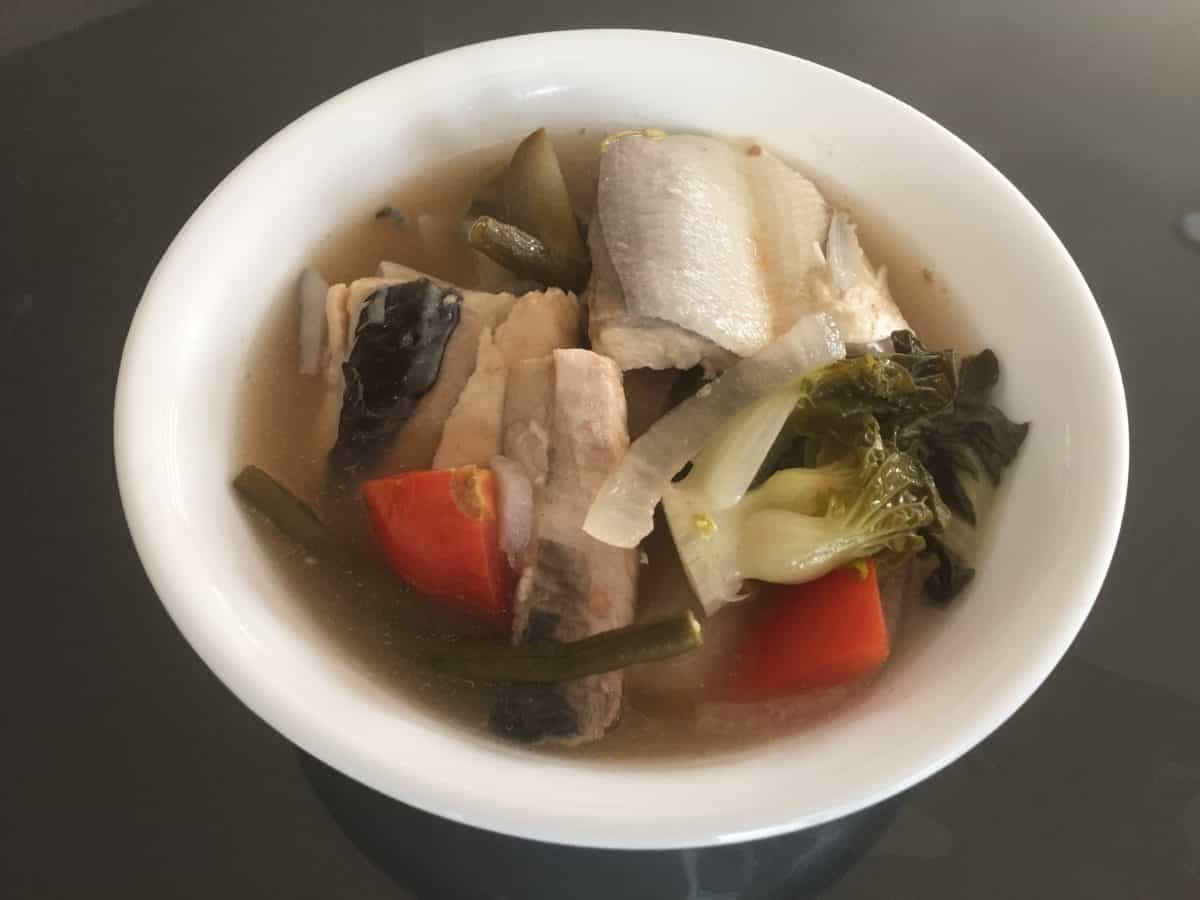
Sinigang na Bangus Belly
Ingredients
- 2 lbs milkfish belly boneless
- ½ lb long beans chopped
- 3 medium eggplants chopped
- 1 lb baby bok choy
- 2 medium tomatoes chopped
- 1 medium onion sliced
- 1 small ginger chopped
- 1 pouch sinigang mix 1.76 oz (50 g)
- 8 cups water
Instructions
- Heat Water: Start by heating up water until it boils. Keep it boiling for about 5 minutes.
- Add Veggies and Sinigang Mix: Next, carefully add all your chopped vegetables into the boiling water. Open a packet of sinigang mix and pour it in as well. Stir everything together and allow the pot to cook for another 10 minutes.
- Include Milkfish Belly: Now it's time for the milkfish belly – gently place it into the pot and leave it to cook for 5 more minutes. This will infuse the flavors.
- Ready to Enjoy: Once done, turn off the heat. Your dish is ready to be served! Enjoy this comforting meal with a side of steaming hot rice.
